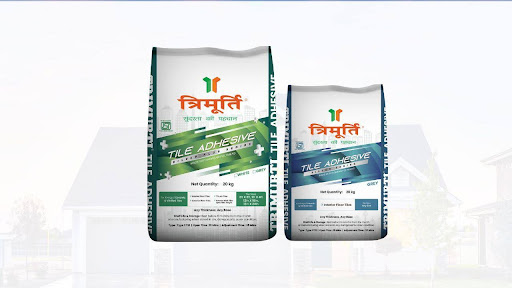A quality internal finish starts with the selection of quality materials and the proper method of application. Experts in renovation and building have come to understand that surface preparation, touch-up, skin coats, and quality tile sully comprise a ladder of work that predetermines every enduring performance and finish. The article focuses on common solutions to putting putty on wall surfaces, the choice of manufacturers of skim coats, and the necessity to select proper adhesive tile solutions in order to achieve durability, moisture-resistance, and even visual balancing. Each heading discusses a sensitive phase of the finishing process and points out some considerations of interest to contractors, architects, and facility managers.
1.Preliminary services on the wall before putty is applied
A good evaluation of the substrate should be done before applying any finishing product. Masons, concrete, plaster, gypsum board and old paint finishes, respectively, need individual preparation. Unevenness must be detected, dirt, efflorescence, loose material, and structural cracks should be removed or stabilized. The appropriate proportioning of profiling and priming the surface provides an accommodating surface to the putty application on wall-based materials, thus enhancing adherence and decreasing chances of future adhesive loss or the risk of delamination. Testing moisture contents and proper curing length of new plaster or concrete additionally avoids early collapse of the next finishing.
2.Choosing the appropriate putty to achieve desired finish and durability
Putty can be found in a variety of formulations on the market to suit different purposes: filling minor flaws or shaping high-gloss receptive surfaces on which the paint can be applied or offering moisture-resistant topcoats in damp climates. The criteria of selection are based on the targeted finish, environmental exposure and acumen of applicators. Putty on wall applications designed to be applied to high traffic or wet areas should focus on being more flexible and having a longer bonding interval, and an application of decorative interiors can focus on workability and accept fine sanding features. The proper mixing, storage, and use with the manufacturer’s instructions is essential to reach the expected performance envelope.
3.Best practices and techniques to use putty on the wall
The method of application can greatly affect the quality of the finish. Professional installers apply successive thin layers in place of a single thick coat, with each layer dried and lightly abraded before proceeding to a subsequent layer. The smoothness of the result is determined by trowel angles, pressure, and feathering at edges. Awareness of surrounding conditions, especially temperature, humidity and ventilation, ensures proper drying and minimizes the possibility of cracking. More practiced teams also use time putty application so that it coincides with the next trade, to prevent contamination by the dust or overspray of the plaster, which might affect the bond or the aesthetic.
4.Skim coat manufacturers and role in quality outcomes
Skim coat manufacturers are decisive in achieving finishes consistently. Credible skim coat supply companies spend on formulation quality, quality control, and technical support to the applicators. The product lines frequently offer fast-setting, polymer-modified, or extended workability products that fit different climates and project timeframes. In addition to the chemistry of products, manufacturers who include in the product a clear technical datasheet, recommended substrate preparation, and instructions on which primers and tools to use reduce field failures. Choosing skim coat manufacturers that have a verifiable track record and have reliable local supplies eliminates schedule risks and provides the potential of getting the proper materials.
5.Selecting compatible systems: Skim coats to paints and sealers
System component compatibility is required. The bond between a skim coat and a base substrate, and the bond between paint or sealer and a skim coat, is a matter of identical surface energy and proper priming. Poor wetting or blistering can occur when there is a mismatch (e.g. a highly alkaline skim coat is used with an incompatible primer). Professionals prefer to have system solutions where end-to-end recommendations can be made by skim coat manufacturers. Testing with trial patches, adhesion testing, and observance of relative humidity and temperature recommendations will also assist in ensuring that the system assembled will function as desired through the building life cycle.
6.Choosing adhesive tiles: Secure fixing of ceramic and stone in the long term
After the finishing of the walls, the choice of adhesive tile products is crucial where the tiling is needed. The tile adhesive should be selected based on the type of tile (ceramic, vitrified tile, porcelain), flexibility of the substrate, exposure to the environment (humidity, heat, etc.) and joint width. Specific performance profiles can be identified in cementitious adhesives, polymer-modified mortars, and dispersion adhesives. By selecting the right adhesive tile product, there will be reduced chances of movement of tiles, lippage, or water entering behind finishes. An effective adhesive also enhances grout compatibility and continuity of aesthetics in tiled structures.
7.Tile work with putty and skim workflows
Finishing crews and tilers avoid conflict and rework through coordination. Whenever tiling is in contact with putty or skim-coated walls, edges should be treated and substrates levelled for a smooth visual transition. The installation of adhesive tiles is aided by substrates that are flat to the recommended tolerances; deviations can be removed by skim coat work before any tiling. Joint treatments and movement joints should be designed to allow the possibility of differential movement between tile assemblies and adjoining completed walls. Good sequencing and coordination between trades reduces the likelihood of damage to surfaces and maintains the quality of putty on wall finishes as well as tile installations.
8.Finished surface maintenance, repair, and longevity
The workmanship and materials of roofing also affect the durability of the completed surfaces. Predetermined inspections detect early indications of delamination, hairline cracking, or degradation of tile grout. Maintenance measures encompass cleansing procedures that are suitable for the surface finish, minor repairs, applying suitable putty to the wall materials, and subsequent resealing of the grout in wet zones to stop ingress of moisture. In situations where repairs must be made, using similar types of products produced by established skim coat manufacturers or repair mortars that are recommended by the manufacturers of the products would aid in maintaining visual and structural continuity. The long-term value of the completed space is improved with lifecycle planning that factors in maintenance schedules.
Conclusion
The close connection between the preparation of the substrate and proper application of the putty on the walls, proper selection among the skim coat manufacturers and proper application of the adhesive tiles results in a beautiful and lasting finish. The costs of every choice, including evaluation of the substrate, specification of compatible systems, shape the performance and maintenance requirements in the long run. Once the professionals use best practices, take technical advice given by manufacturers, and coordinate their work between trades, the interiors achieved will be pleasing visually and stand the test of time.



